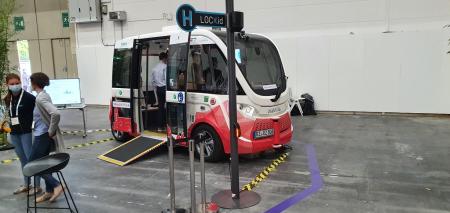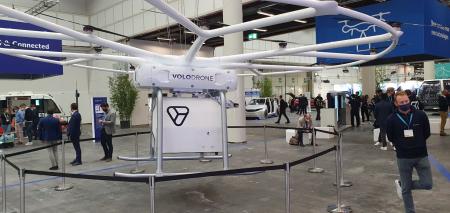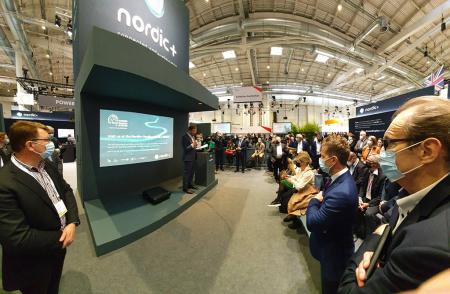The ITS World Congress is the biggest event focused on smart mobility and the digitalisation of transport. The congresses are the yearly celebration of smart mobility: they underline the importance of Intelligent Transport Systems (ITS), particularly in cities and regions where they are hosted. The events are important channels to raise awareness of smart mobility solutions among policy makers, experts and the general public.
This October, over 13 000 attendees were able to Experience Future Mobility Now during an exceptional five days of activities in Hamburg, Germany where exhibitors showcased the latest mobility solutions, Congress Partners presented state-of-the-art innovations and inspiring speakers from around the world spoke during 210 sessions.
COVID-19, climate change and the need for improved efficiency in transport puts pressure to find new approaches for transport of both people and goods. Despite the advancements, in many areas of transport innovation the expectations have become more realistic and additional areas of concern, such as ethical questions, need to be addressed. For example, development of autonomous vehicles in all modes of traffic seems to be a bit slower than what was envisioned in the previous ITS World Congress 2019 in Singapore.
Several autonomous busses were showcased in Hamburg.
Volodrone can transport both people and goods.
In search for smoother travel chains
Mobility as a Service (MaaS) was visible in several presentations. The need for increased collaboration between public and private players was emphasized in several talks. Development of MaaS seems to need bundling with several other services. For example in Japan housing was combined with MaaS services.
According to MaaS Global CEO Sampo Hietanen, 38% of people would like to change their private cars for public transport if it only were feasible. COVID-19 has unfortunately changed the trends to a wrong direction – after the pandemic people have started to appreciate their cars even more than before. It was notable though that ride sharing and ride hailing services were showcased by several players in Hamburg. For example MOIA (https://www.moia.io/en) is piloting its fully electrical, ride sharing service in Hamburg.
Some concrete steps have been taken to plan and pay a journey consisting of different traffic modes in one application. Deutsche Bahn, the German national railway company, has onboarded other traffic modes into its MaaS application (Mobimeo). The service is already now available for hundreds of thousands of users. In Finland, the bus operator Matkahuolto has pioneered combining different traffic modes with its Routes & Tickets application.
Matkahuolto's Routes and Tickets application
How to build successful ecosystems?
Fintraffic’s Chief Ecosystem and Technology Officer Janne Lautanala introduced the work of Traffic Data Ecosystem at Nordic+ stand. In the traffic world, we are only just taking our first steps into the widespread utilisation of data. The parties have not yet agreed on rules and routines for effectively sharing data between operators, coordinating different services, or seamlessly connecting the devices used by vehicles, infrastructure, service providers and customers.
The Traffic Data Ecosystem aims to create rules for a fair data economy in the traffic market in order to provide the best traffic and logistics services, and create new business opportunities for companies. The ecosystem has already more than 120 organizations involved.
Successful ecosystem requires components of collaboration, digital infrastructure and common rules. These components were mentioned several times during the week when recipe for successful ecosystem was evaluated. In many cases, the collaboration between public and private organization is essential to advance the market. These are exactly the goals of the Traffic Data Ecosystem, too.
It was great to see that Fintraffic’s globally unique approach of combining all modes of traffic and aggregation and utilization of data interested visitors. Fintraffic’s Chief Ecosystem and Technology Officer Janne Lautanala on stage.
Digital to the rescue
Importance of high-quality data was emphasized in several talks. Almost all new transport and logistics solutions are based on increased capabilities to utilize data. This requires, however, increased level of data sharing and interoperability between players.
Digirail, presented by Jari Pylvänäinen from Fintraffic, is a great example of taking full advantage of digitalisation. Digirail provides a modern and cost-efficient solution for securing the competitiveness of railway traffic. https://digirata.fi/
The joint Nordic+ exhibition stand brought over 60 expert companies together from Finland, Sweden, Norway, Denmark and Estonia. www.itsnordicplus.com
Blog by:
Janne Lautanala, Chief Ecosystem and Technology Office, Fintraffic
Mikko Saariaho, Chief Impact Officer, Fintraffic
Saara Salaja, Communications Manager, Fintraffic








